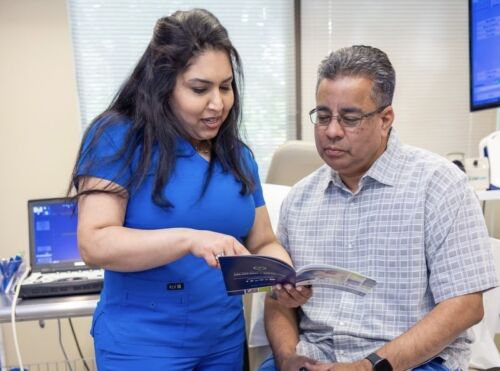We all know to use an ice pack to reduce swelling. Does the same concept apply to varicose veins?
Injury to your body often results in inflammation and swelling. It's common knowledge that applying a cold compress can numb the affected area, reducing swelling, pain, and tenderness. As such, you wonder if an ice pack can accomplish the same for varicose veins.
The answer is yes! Applying an ice pack can temporarily bring down the symptoms of varicose veins. But to get the maximum benefits, you must know how to use cold therapy correctly. If not applied properly, you could harm your skin.
But first, here’s why you may have varicose veins
Varicose veins develop when tiny valves in the leg veins become so weakened they can no longer effectively push blood back to the heart. As the blood pools in the vein, the vein bulges from under the skin, turning into a varicose vein. Swelling, pain, itching, burning, and cramping often accompany varicose veins.
About 35 percent of adults will be affected by varicose veins in their lifetime. Risk factors range from family history to a sedentary lifestyle. Women are also more prone to developing varicose veins due to hormonal changes during pregnancy and menopause. Obesity can also raise the risk of varicose veins.
How an ice pack can alleviate the symptoms of varicose veins
If you’ve had varicose veins for a while, you may have noticed the swelling and pain tend to increase in the summer heat and decrease when temperatures drop.
Cold temperatures cause the veins to narrow. As a result, blood has less chance to pool and can move through the vein more efficiently. The same idea applies to cold therapy: the cold improves circulation and reduces swelling.
Always check with your doctor first before trying cold therapy. But in general, here are some ways to get the most out of your ice pack:
Get creative. You can buy an ice pack or make your own at home. A package of frozen vegetables or a moistened towel covered by a plastic bag and placed in a freezer for 15 minutes works just as well. Another DIY method is filling a plastic bag with ice.
Apply for 20 minutes at a time. While you can apply the ice pack several times daily, leave it on for only 20 minutes. If left on the skin too long, the cold may cause frostbite.
Never put ice directly on the skin. The ice could stick to your skin and cause burns. Always use a towel or a layer of plastic between the ice pack and your skin.
An ice pack is one home remedy to reduce varicose vein symptoms. But there are other ways to counteract the pain and swelling, such as regular exercise, compression stockings, and elevating your legs above your heart.
Note that self-care only reduces the symptoms of varicose veins. To eliminate varicose veins, consult a vein specialist about your varicose vein treatment options. Minimally invasive vein procedures include:
Sclerotherapy: Sclerotherapy involves injecting a safe, saline-based solution to scar and close the vein.
Thermal ablation: During a thermal ablation procedure, the doctor will pulse either laser or radiofrequency heat to close the vein.
Ambulatory phlebectomy: Ambulatory phlebectomy involves extracting the swollen vein through two tiny incisions.
By destroying the diseased vein, blood can divert to nearby healthy veins. The diseased vein will eventually fade as the body absorbs it. Each procedure takes only an hour, and you can resume your daily activities with few restrictions.
Varicose vein symptoms got you down?
The pain and swelling of varicose veins can make everyday life difficult. But there are solutions, and we can help.
At Center for Vein Restoration (CVR), our board-certified physicians use various proven and safe techniques to eliminate varicose veins. We work with every patient to develop a tailored treatment plan combining medical therapy and lifestyle changes.
Contact your nearest CVR location today to schedule a consultation or speak to a representative. You may also schedule online at your convenience.

 About Vein Disease
About Vein Disease
 Spider Veins
Spider Veins
 Varicose Veins
Varicose Veins
 Vein Disease Treatments
Vein Disease Treatments
 Treating Spider Veins
Treating Spider Veins
 Treating Varicose Veins
Treating Varicose Veins
 About Us
About Us
 Patient Resources
Patient Resources
 Physician Resources
Physician Resources


